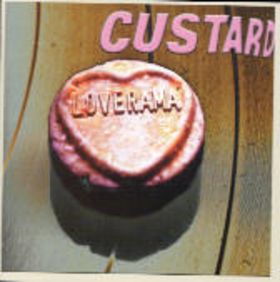I drink, I smoke, I use autotune
Source: TN:138 Charli XCX, George Daneil & A.G. Cook
Charli XCX’s comment on autotune on the Tape Notes podcast sums Brat up for me. On the one hand, Charli XCX cares, she cares enough to know that she wanted something other than her previous album, Crash, but she also does not seem to care enough to worry about how she might be perceived in supposedly turning from the mainstream. As Alexis Petridis suggests, Brat is something of a ‘palate cleanser’.
Satisfying the contract she signed with Atlantic as a teenager, 2022’s Crash was a conceptual go-for-broke by a pop star who had made her name as a refusenik, save a few uneasy youthful flirtations with the mainstream. She swapped her avant garde collaborators for blue-chip songwriters, mastered slick choreo and duly interpolated old dance bangers. It worked, becoming her most successful album yet. Having simply decided to be successful and then pulled it off, most artists in her position would surely keep at it. Not Charli, who has since admitted that she couldn’t even listen to some of Crash, nor stomach the rictus-grin promo. The sleazy grind of Brat, her superb sixth album, is the palate cleanser, albeit one that tastes like cigarettes, vodka and chemical afterburn.
Source: Charli XCX: Brat review | Laura Snapes’ album of the week by Alexis Petridis
I feel that there is an element of Ian Brown about it all. This is who I am, this is what you are going to get. I am sure there is more to it, but that is certainly how it feels.
Brat wears a prickly carapace as lure and defence. Unlike the crowdpleasing Crash, the textures here are defiantly underground – panel-beating, serrated, darkly bubbling with acid – made with the likes of Daniel, AG Cook, Easyfun, Hudson Mohawke and Gesaffelstein. It plots Charli’s history with dance music, from lifelong Aphex fan to bloghouse teen and PC Music doyenne with a sincere respect for trash.
Source: Charli XCX: Brat review | Laura Snapes’ album of the week by Alexis Petridis
As an album, Brat is rather lean, there really is no fat anywhere. Charli XCX manages to fit 15 tracks on one vinyl disc. I imagine there maybe some remixes drawn out produced from some of these tracks, as there are so many threads that feel that they could be teased out further, as was captured in the PARTYGIRL Boiler Room performance. However, as an album, everything feels like it is in its right place.
What was interesting was that the singles did not really lay out the narrative for me. I was circumspect on hearing ‘360’ and ‘Von Dutch’. I entered Brat as a ‘return to the club’ and wondered what that would mean.
i was born to make dance music.. i came from the clubs.. xcx6 is the album i’ve always wanted to make.
Source: Charli on Twitter, Feb 25, 2024
Yes, there is a clear palette 808’s and 909’s throughout, something discussed on the Tape Notes podcast by Charli XCX, ‘Alex’ Cook and George Daniel. However, as Jem Aswad suggests, “there’s a lot more more besides.”
The album changes moods surprisingly smoothly with nearly every track, not just musically but lyrically: The songs swerve between boastful swagger and shriveling insecurity and vulnerability, and are autobiographical in their conflicted feelings about fame, success and her own worth.
…
But “Brat” would be a masterful album even if all the lyrics were simply about clubbing — it’s melodically and musically sophisticated, with remarkably detailed production. As always, she’s a serial collaborator, and A-list coproducers here include Cirkut, George Daniel, El Guincho, Gesaffelstein, Hudson Mohawke, Finn Keane and others, and A.G. Cook is back in the copilot seat, bringing his shimmering arpeggios and countermelodies to a majority of the songs.
Source: Charli XCX Launches an Exhilarating New Chapter of Pop With the Innovative ‘Brat’: Album Review by Jem Aswad
In some ways, I wonder if ‘the return to the club’ is a distraction in the same way as St Vincent creating a ‘Toolesque’ album? Just as I was unsure about St Vincent’s initial singles, I too was not sure about Charli XCX’s initial releases, however in both cases hearing them as a part of a whole seemed to make more sense.
Charli XCX goes in and out of thoughts and experiences. One minutes she is talking about jealously, then regret, then her own ego. For me, it is an album album, with great tracks, made better as a whole. With this in mind, it is interesting listening to it alongside Taylor Swift’s Tortured Poets Department. I feel both grapple with life, but each in a different way. Petridis argues that Charli XCX grapples with being human.
Most of her superstar peers are busy making unrelatable music about how hard it is to be famous. Yet Charli has never lost sight of how hard it is to be human.
Source: Charli XCX: Brat review | Laura Snapes’ album of the week by Alexis Petridis
Brat though is more than just an album, it seems to be an attitude. There is talk of a ‘brat’ summer, whatever that actually means. For me, this attitude was something that started with George Daniel and Charli XCX’s remix (or reclamation) of Caroline Polachek’s ‘Welcome to my Island’. With Charli’s added “bitch” to the chorus hook, it feels like she is graffitiing a piece of art, making it her own. I cannot hear the original without hearing Charli XCX’s statement, what is heard cannot be unheard.
Place between AG Cook and Caroline Polachek









